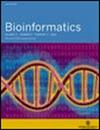scDAC: deep adaptive clustering of single-cell transcriptomic data with coupled autoencoder and dirichlet process mixture model.
IF 4.4
3区 生物学
Q1 BIOCHEMICAL RESEARCH METHODS
引用次数: 0
Abstract
MOTIVATION Clustering analysis for single-cell RNA sequencing (scRNA-seq) data is an important step in revealing cellular heterogeneity. Many clustering methods have been proposed to discover heterogenous cell types from scRNA-seq data. However, adaptive clustering with accurate cluster number reflecting intrinsic biology nature from large-scale scRNA-seq data remains quite challenging. RESULTS Here we propose a single-cell Deep Adaptive Clustering (scDAC) model by coupling the Autoencoder (AE) and the Dirichlet Process Mixture Model (DPMM). By jointly optimizing the model parameters of AE and DPMM, scDAC achieves adaptive clustering with accurate cluster numbers on scRNA-seq data. We verify the performance of scDAC on five subsampled datasets with different numbers of cell types and compare it with fifteen widely-used clustering methods across nine scRNA-seq datasets. Our results demonstrate that scDAC can adaptively find accurate numbers of cell types or subtypes and outperforms other methods. Moreover, the performance of scDAC is robust to hyperparameter changes. AVAILABILITY The scDAC is implemented in Python. The source code is available at https://github.com/labomics/scDAC. SUPPLEMENTARY INFORMATION Supplementary data are available at Bioinformatics online.scDAC:利用耦合自动编码器和 Dirichlet 过程混合物模型对单细胞转录组数据进行深度自适应聚类。
动机 对单细胞 RNA 测序(scRNA-seq)数据进行聚类分析是揭示细胞异质性的重要一步。人们提出了许多聚类方法,以从 scRNA-seq 数据中发现异源细胞类型。结果在这里,我们提出了一种单细胞深度自适应聚类(scDAC)模型,它将自动编码器(AE)和德里克利特过程混杂模型(DPMM)结合在一起。通过联合优化AE和DPMM的模型参数,scDAC在scRNA-seq数据上实现了具有精确聚类数的自适应聚类。我们在五个具有不同细胞类型数量的子样本数据集上验证了 scDAC 的性能,并将其与九个 scRNA-seq 数据集上广泛使用的十五种聚类方法进行了比较。结果表明,scDAC 可以自适应地找到准确的细胞类型或亚型数量,其性能优于其他方法。此外,scDAC 的性能对超参数变化具有鲁棒性。源代码可在 https://github.com/labomics/scDAC.SUPPLEMENTARY 上获取。 补充数据可在 Bioinformatics online 上获取。
本文章由计算机程序翻译,如有差异,请以英文原文为准。
求助全文
约1分钟内获得全文
求助全文
来源期刊

Bioinformatics
生物-生化研究方法
CiteScore
11.20
自引率
5.20%
发文量
753
审稿时长
2.1 months
期刊介绍:
The leading journal in its field, Bioinformatics publishes the highest quality scientific papers and review articles of interest to academic and industrial researchers. Its main focus is on new developments in genome bioinformatics and computational biology. Two distinct sections within the journal - Discovery Notes and Application Notes- focus on shorter papers; the former reporting biologically interesting discoveries using computational methods, the latter exploring the applications used for experiments.
 求助内容:
求助内容: 应助结果提醒方式:
应助结果提醒方式:


